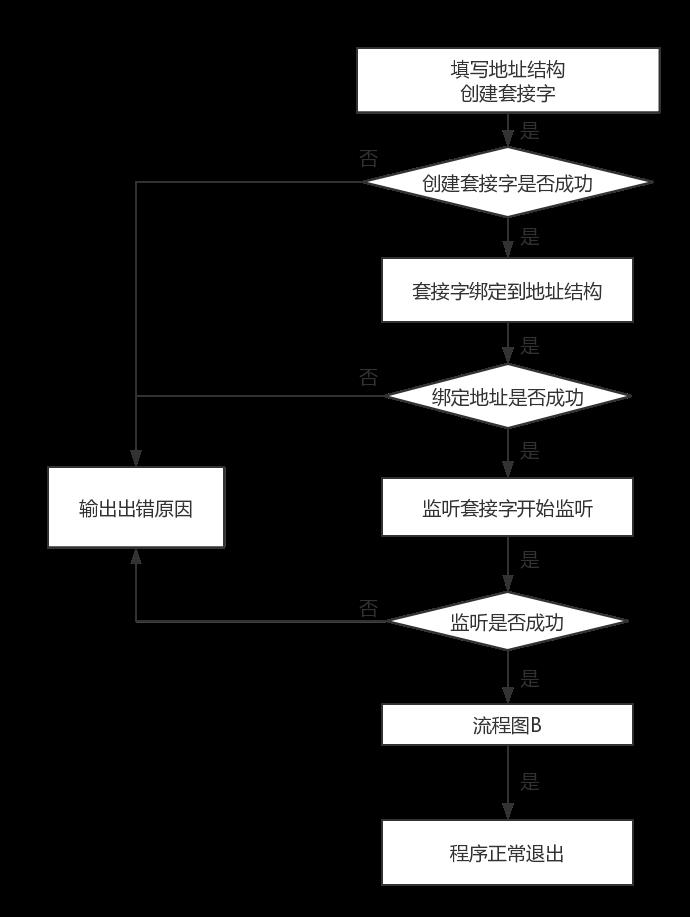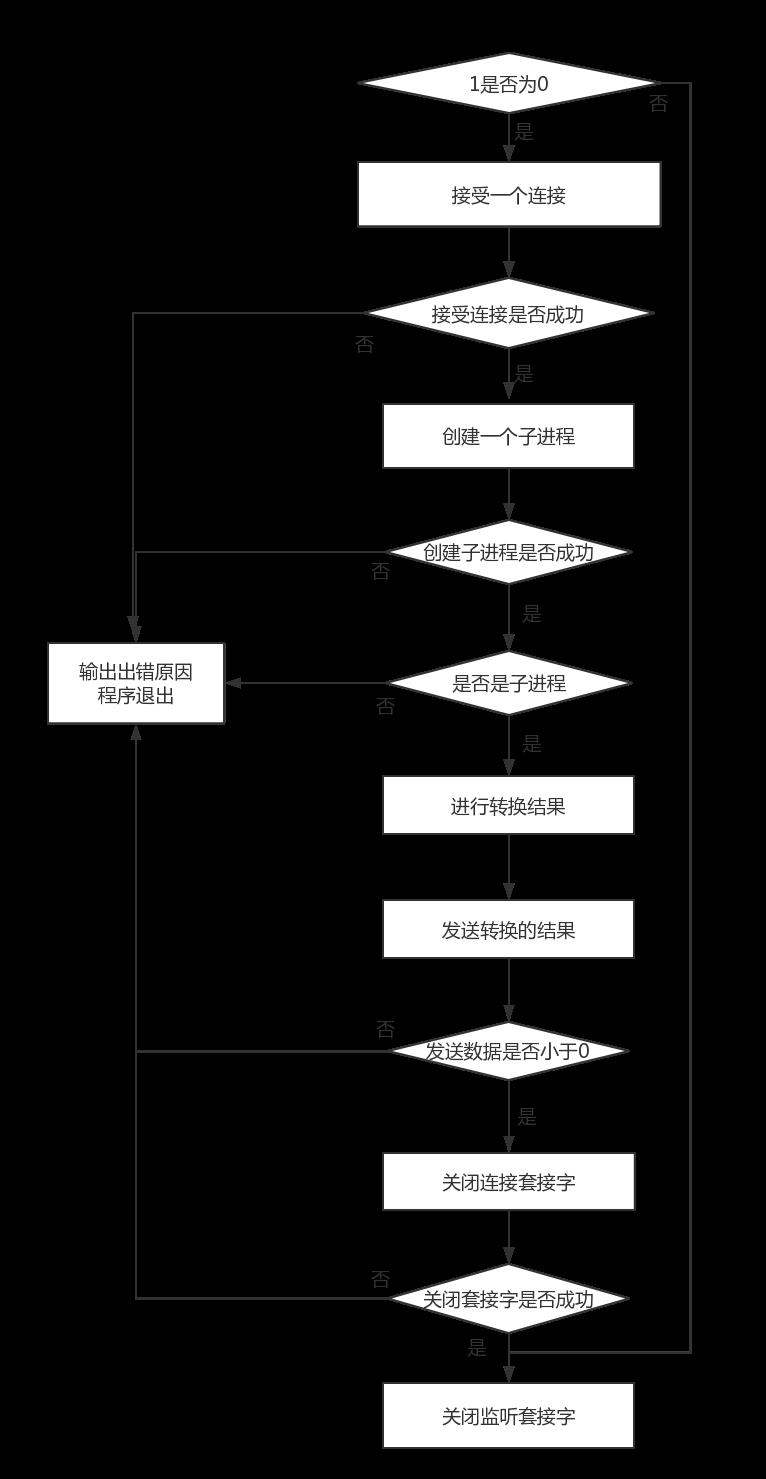面向连接的网络应用程序--服务器端
Posted 杨静远
tags:
篇首语:本文由小常识网(cha138.com)小编为大家整理,主要介绍了面向连接的网络应用程序--服务器端相关的知识,希望对你有一定的参考价值。
Linux环境下有专门用于读写面向连接的套接字函数,分别是send函数和recv函数,send函数和recv函数原型如下:
ssize_t recv(int sockfd, void *buff, size_t nbytes, int flags);
头文件: #include <sys/socket.h>
参数说明:第一个参数sockfd是指定发送端套接字描述符,第二个参数buff存放要发送数据的缓冲区,第三个参数nbytes是实际要发送的数据的字节数,第四个参数flags一般设置为0。
返回值:成功返回发送实际发送的数据的字节数,失败返回-1.
ssize_t send(int sockfd, const void *buff, size_t nbytes, int flags);
头文件: #include <sys/socket.h>
参数说明:第一个参数sockfd是指定发送端套接字描述符,第二个参数buff存放recv函数接收到数据的缓冲区,第三个参数nbytes是指明buff的长度,第四个参数flags一般设置为0。
返回值:recv函数返回值有3种情况
大于0,表示成功接收数据,返回值是实际接收的字节数;
等于0,表示无可用数据或者通信端已经结束了发送数据;
等于-1,表示接收数据出错。
现在要用send和recv函数来写一个面向连接数据传输的服务器端程序,流程图如下:

服务器端的执行流程

服务器端的执行流程B
程序代码如下所示:
#include <stdio.h> #include <unistd.h> #include <string.h> #include <stdlib.h> #include <strings.h> #include <ctype.h> #include <sys/socket.h> #include <arpa/inet.h> #define MAX_LINE 100 int main(void) { struct sockaddr_in sin; struct sockaddr_in cin; int l_fd; int c_fd; socklen_t len; char buf[MAX_LINE]; char addr_p[INET_ADDRSTRLEN]; int port = 8000; int n; bzero(&sin, sizeof(sin)); sin.sin_family = AF_INET; sin.sin_addr.s_addr = INADDR_ANY; sin.sin_port = htons(port); /*创立套接字,使用TCP协议*/ if((l_fd = socket(AF_INET, SOCK_STREAM, 0)) == -1) { perror("fail to creat socket"); exit(1); } /*将地址和套节字绑定*/ if(bind(l_fd, (struct sockaddr *) &sin, sizeof(sin)) == -1) { perror("fail to bind"); exit(1); } /*开始监听连接请求*/ if(listen(l_fd, 10) == -1) { perror("fail to listren"); exit(1); } printf("waiting...\\n"); while(1) { /*接受连接请求,从此函数中返回后就可以开始通信了*/ if((c_fd = accept(l_fd, (struct sockaddr *) &cin, &len)) == -1) { perror("fail to accept"); exit(1); } /*调用recv函数读取客户端传来的信息,不设置任何特殊的标志*/ n = recv(c_fd, buf, MAX_LINE, 0); if(n = -1) { perror("fail to receive"); exit(1); } else if(n == 0) { printf("the connect has been closed\\n "); close(c_fd); continue; } /*将客户端地址转换为字符串*/ inet_ntop(AF_INET, &cin.sin_addr, addr_p, sizeof(addr_p)); printf("client IP is %s, port is %s \\n", addr_p, ntohs(cin.sin_port)); printf("connect is : %s\\n", buf); n = strlen(buf); sprintf(buf, "%d", n); /*使用send函数将转换后的字符串发送给客户端,不设置任何特殊的标志*/ n = send(c_fd, buf, strlen(buf) + 1, 0); if(n == -1) { perror("fail to send"); exit(1); } if(cloes(c_fd) == -1) { perror("fail to close"); exit(1); } } return 0; }
以上是关于面向连接的网络应用程序--服务器端的主要内容,如果未能解决你的问题,请参考以下文章